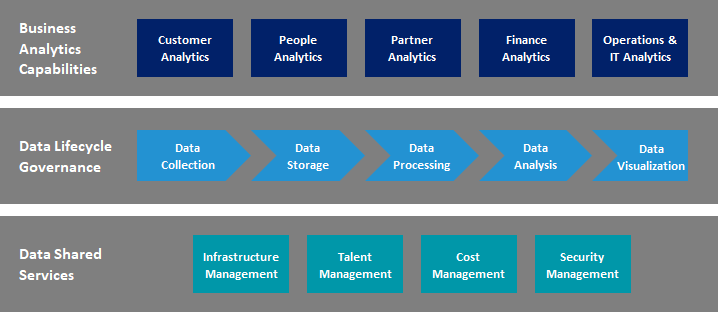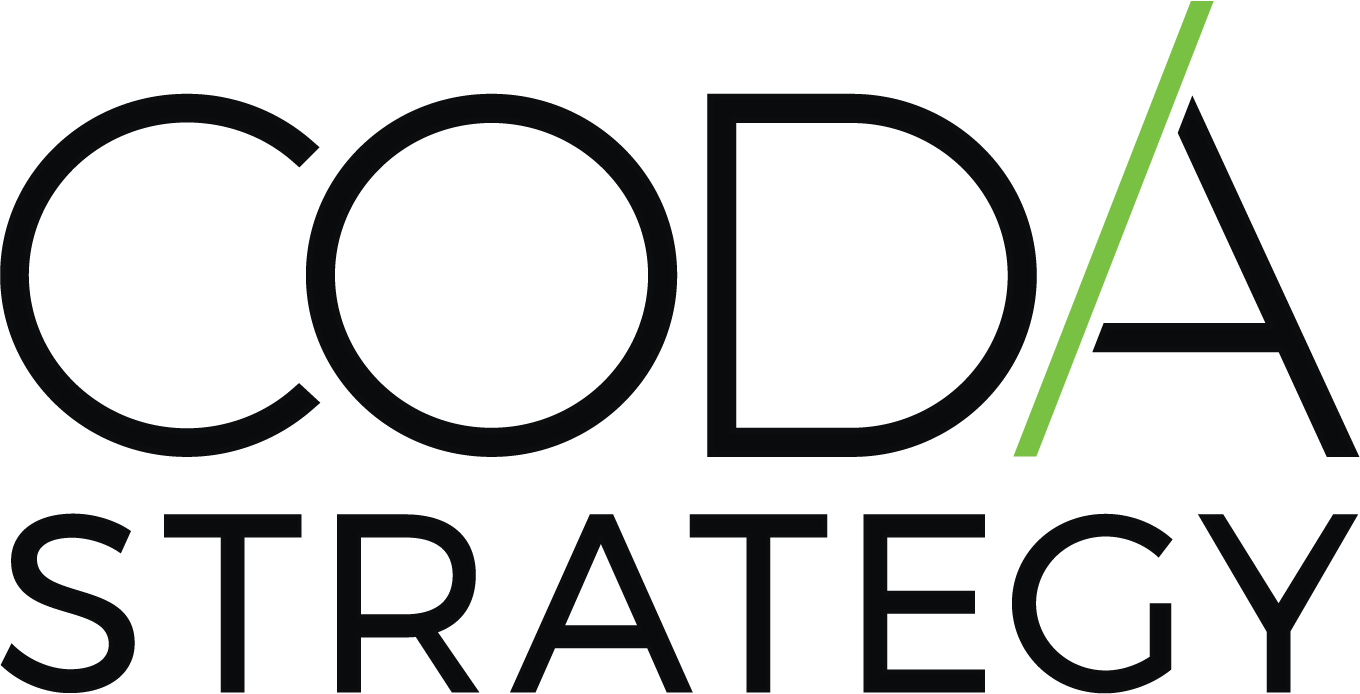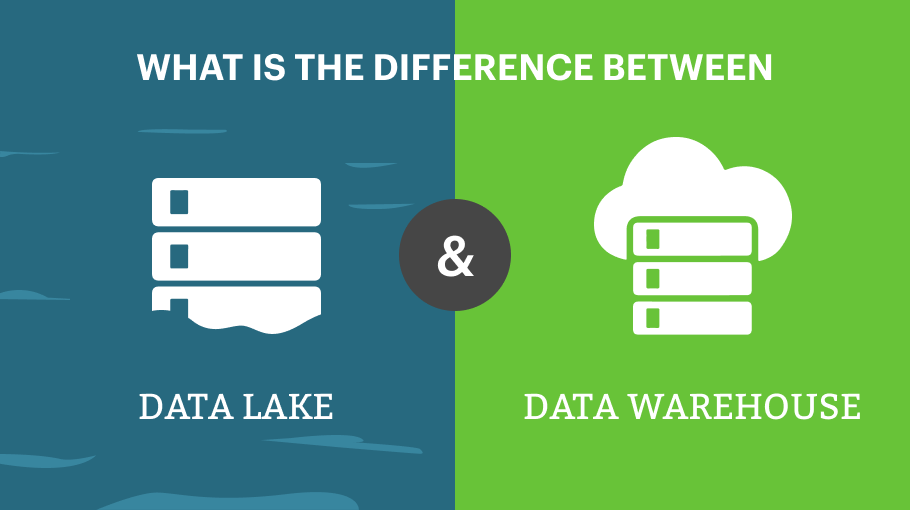As technology continues to transform our lives, many companies have found new ways to analyze our digital interactions. Every time we hail a ride on Uber, watch a movie on Netflix, or order products on Amazon, we generate massive amounts of data.
That data continues to grow. IDC forecasts data creation and replication will grow at 23% per year. Companies that can take actions based on analyzing that data gain a competitive advantage. Hence, analytics is one of the hottest topics in today’s business press. By one estimate, the Big Data Analytics market will grow from $240B in 2021 to $639B by 2028.
Thus, to compete in tomorrow’s digital economy, every company needs to be a data company.
Now, to operate a data company, we require strong data governance. Executives now recognize data governance as a strategic problem. To address this challenge, Chief Data & Analytics Officers have begun to introduce data operating models.
However, most data operating models are inward-looking. They treat the data department as a silo. They often do not communicate how the data & analytics department should interact with other parts of the organization.
Data cannot sit in a silo, and a data operating model cannot operate in a vacuum. Instead, it needs to be business-centric, and demonstrate how the entire company will turn data into insights. Thus, a data operating model should demonstrate how the data department will interact with the rest of the company.
A New Comprehensive Data Operating Model with 3 Layers
Now, if the purpose of a data operating model is to address business problems, we should begin by asking three questions:
- How will we engage with business units to address business challenges?
- How will we manage and govern data?
- How will we use existing corporate services?

For example, for a company that operates as a single business in a single region firm, consider a comprehensive data operating model with three layers that addresses each question:
- Business analytics capabilities: How we will produce data-driven insights
- Data lifecycle governance: How we will manage the complete lifecycle of data
- Data shared services: How shared services will address the needs of data professionals
The remainder of this article describes each layer of the comprehensive data operating model.
Business Analytics Capabilities: Addressing Business Challenges
The business analytics layer provides the external interface from business functions to data operations. Business analytics capabilities define:
- Customer Analytics: How we analyze customer behavior to make marketing, sales, and servicing decisions
- People Analytics: How we analyze HR data to promote employee engagement
- Partner Analytics: How we analyze our supply chain and partner ecosystem to improve inefficiencies
- Finance Analytics: How we measure our past and future financial success
- Operations & IT Analytics: How we measure the efficiency and return on our business and tech investments
The business analytics layer can follow a centralized, federated, or hybrid model. In a centralized model, all analytics capabilities reside in the analytics department. A federated model places analytics in each department: Sales, HR, Finance, etc. In a hybrid model, analytics governance is centralized in the analytics department, while each capability is federated. Each model has its benefits and drawbacks.
Data Lifecycle Governance: Managing and Governing Data
As the heart of the data operating model, data lifecycle governance defines the technical details of how data professionals work amongst themselves. Many data operating models focus solely on the data lifecycle layer. However, to do so at the expense of the other two layers is a mistake.
Data lifecycle questions include:
- Data Collection: How do we collect data from various sources? Does it need to be in real-time or can there be a delay?
- Data Storage: Where do we store our data? How do we store it? How long do we keep it?
- Data Processing: How do we prepare and manipulate our data to produce meaningful information?
- Data Analysis: How do we explore and interpret our data to gather meaningful insights?
- Data Visualization: How do we communicate our data-driven insights?
Most companies adopt a centralized model for data collection, storage, and processing. Data analysis and visualization is usually either federated or hybrid.
Data Shared Services: Employing Corporate Services
Finally, the data shared services layer demonstrates how other departments can help support the data department’s people, processes, and technology.
Data shared services define:
- Infrastructure Management: How we partner with IT to maintain our data infrastructure
- Talent Management: How we partner with HR to attract and retain niche data skillsets
- Cost Management: How we partner with Finance to manage data costs
- Security Management: How we partner with InfoSec to secure our data
Most data departments do not create these capabilities in-house. Instead, they leverage shared services across the company to adopt existing business practices.
Takeaways for Implementing the Data Operating Model
Now, the comprehensive data operating model provides a template for a starting point. Before implementation, we need to consider the following.
First, the data operating model offers a starting point for a single-business, single-region company. We must tailor the model to fit the nuances of our company. For example, a company with multiple lines of business may create an analytics capability for each line of business. A company that operates in multiple regions may use multiple shared services centers. Only by customizing the generic data operating model can a company turn data into a competitive advantage.
Second, the data operating model should fit within an organization’s overall digital operating model. We need to define how data operations fit into the company’s digital strategy, and how the organization will execute that strategy through data-driven insights. Otherwise, a data model that does not align with the overall digital operating model will be difficult to implement.
Third, the data operating model cannot stay static. We need to adopt a mindset of continuous improvement to maintain data as a competitive advantage. As new technologies improve, techniques to govern the data lifecycle need to evolve. As new cyber threats emerge, new data security standards need to follow.
By following these guidelines, data & analytics leaders can command a seat at the executive table, offering valuable insights to their peers.






A New Digital Operating Model Can Take Three Forms
January 10, 2023[…] to achieve it. Moreover, a firm can create operating models for individual capabilities, such as a data and analytics operating model for data-driven decision […]